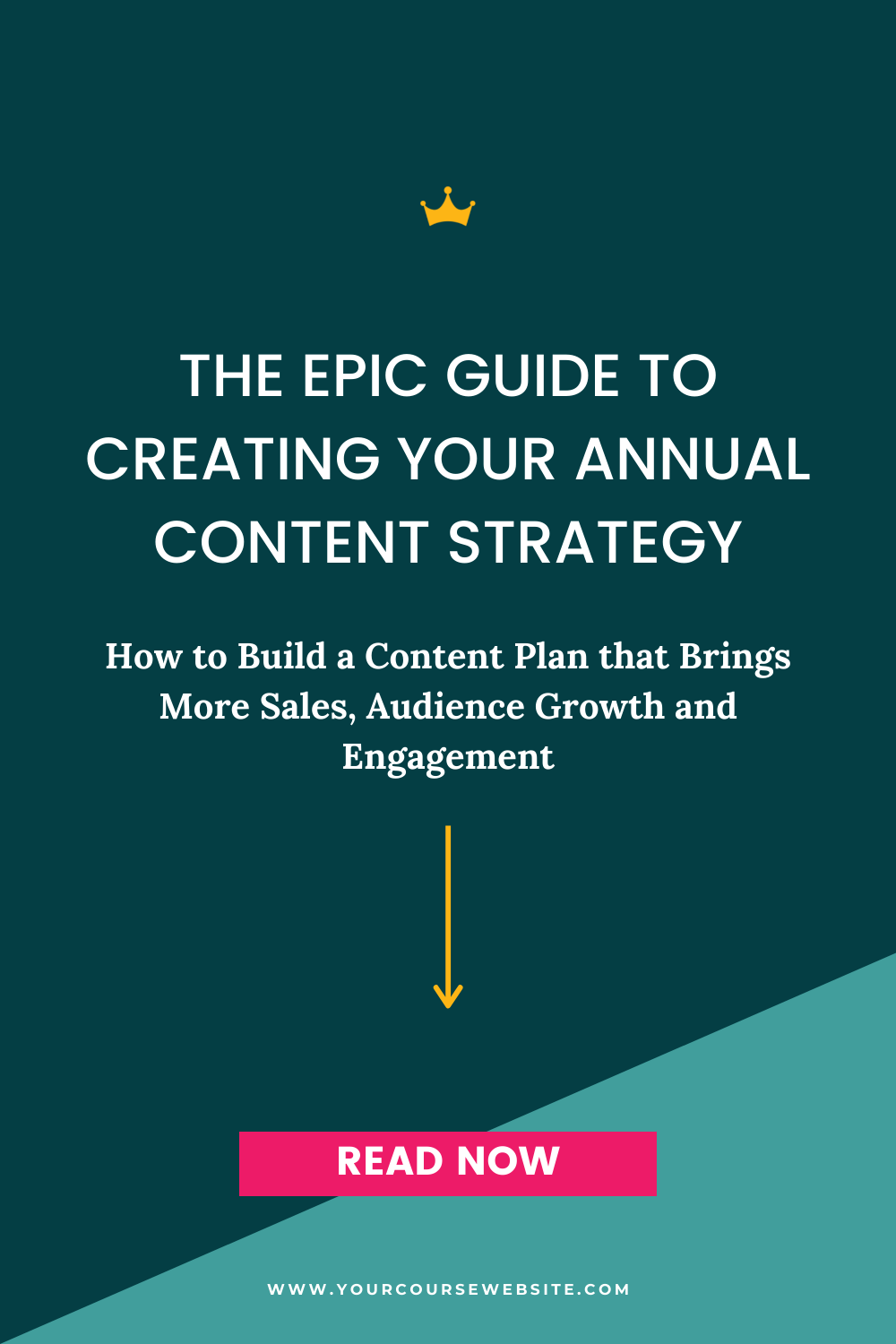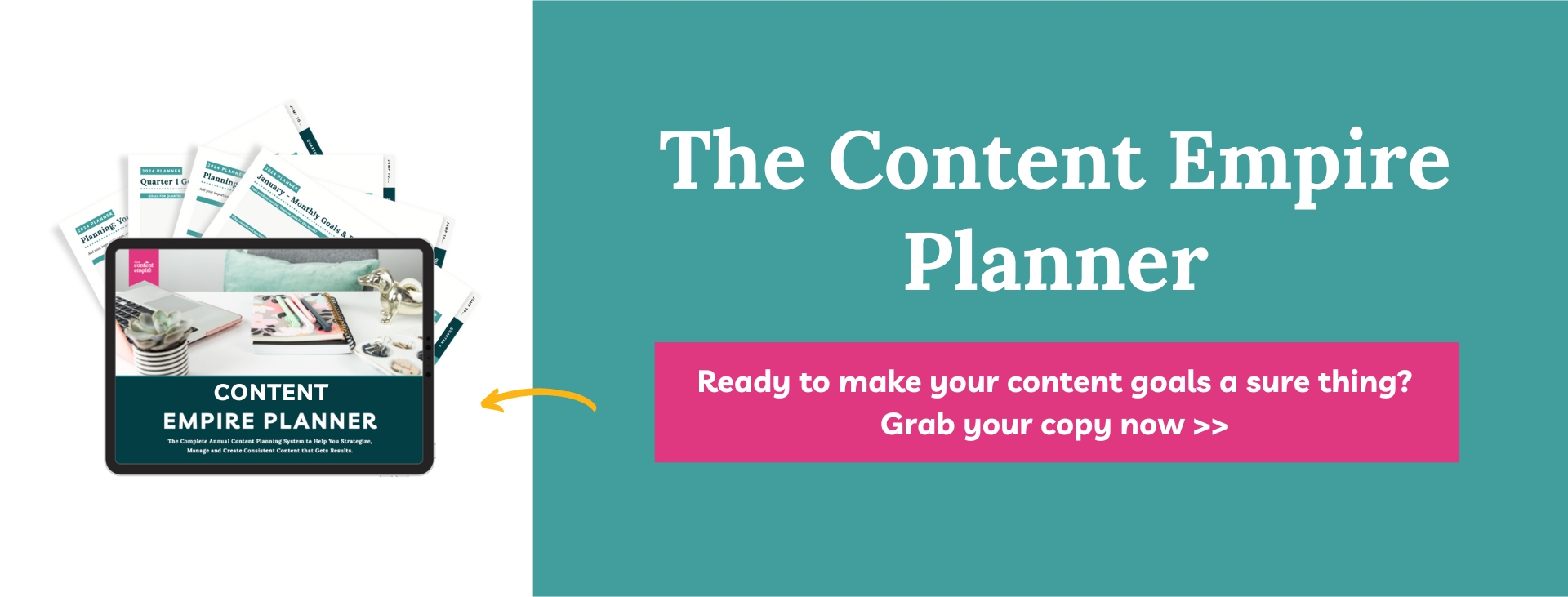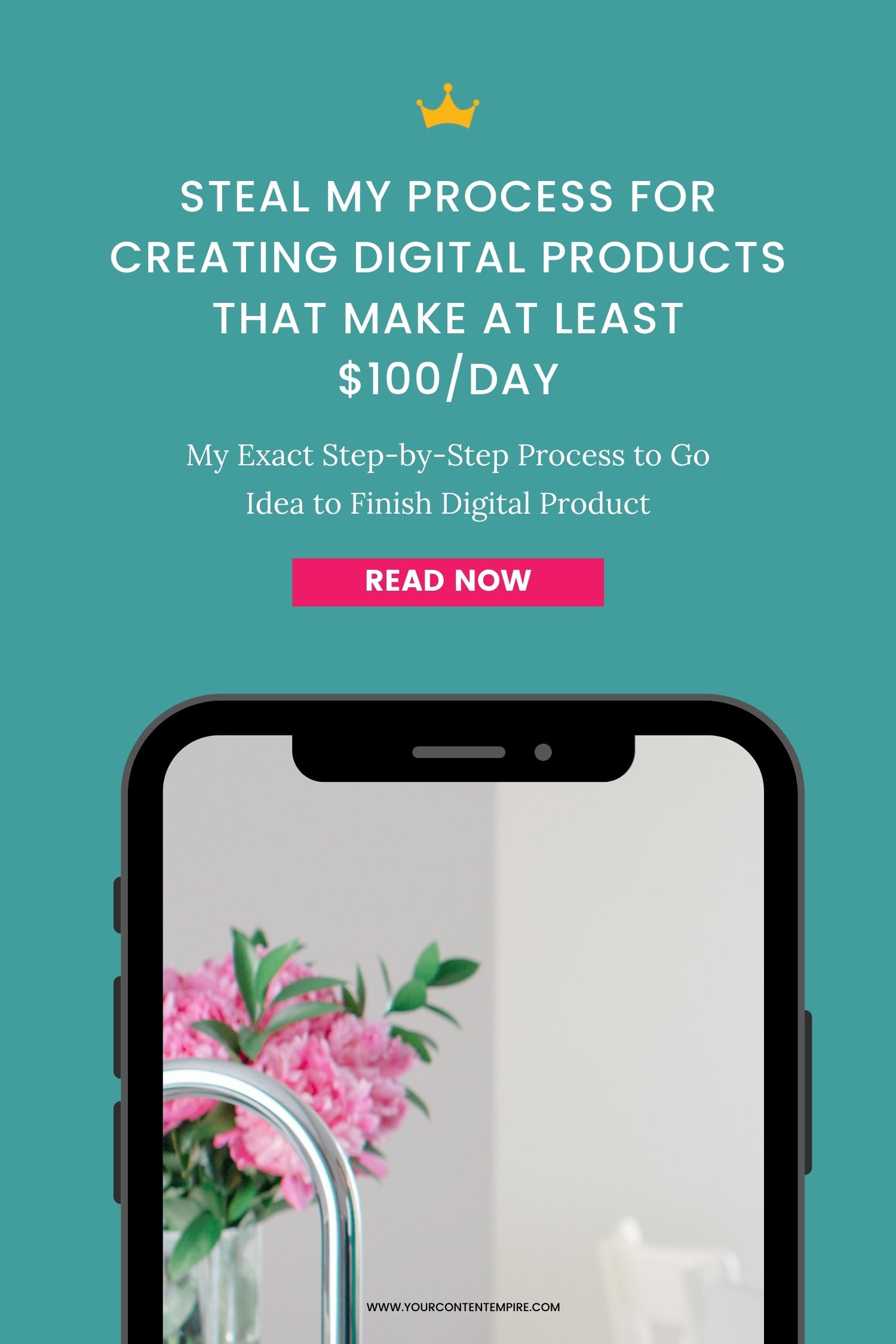You'd think that as a content strategist who helps her clients manage successful content strategies and workflows that I'd have creating my annual content strategy all down for myself, right?
That's not always the case. That shoemaker's children's shoe idiom strikes again.
Now I started the year off with a content strategy and editorial calendar that could basically run itself. My team and I were in a rhythm and our publishing schedule was like smooth jazz and a glass of red wine on Friday night – effortless.
However, mid-year, my husband and I took a first-anniversary slash honeymoon trip — and things quickly fell apart and getting back to our prior content-smoothness has been a bit bumpy.
I got so busy catching up with client work that my own stuff constantly fell to the bottom of my to-do list. You know that pit where things get lost and are never heard from again? (P.S. I'm so over being busy – I hate the feeling, I hate the word – I shake my head at the girl-me who was obsessed with color-coded planners and Ren Stevens – but that's a story for another time.)
So for the coming year, I'm taking a page outta my own Content Empire Playbook. Creating a sustainable, effective and joy-centered content strategy. And I wanted to share my process with you.
Step 1 – Measure what happened last year
I feel like we always misremember things when we look back – like what worked well in a launch campaign, what topics our community liked the most or what newsletters were responded to the most.
That's why it's important to look at the numbers before going into a new year's strategy. I'll be honest, I hate this part the most. It's boring.
So I block a few hours, make a massive tea and get it done (making sure to have a reward waiting for me at the end of it – usually placing an order for the books on my Goodread's ‘want to read' list). I make sure to take my marketing measurements once a month in the Content Empire Planner, so really I'm kind of whining over nothing.
Here's my process:
Gather my tools and records: monthly measurement sheets, yearly marketing summary sheet (mine is from the planner)
Open my marketing tools: Google analytics, social media account analytics, email marketing account, LeadPages
WHAT I'M LOOKING FOR:
Website analytics: Total and unique visitors, bounce rate, time spent on site
Blog analytics: What were my top 10 posts this year? Any trends?
Freebie analytics: How many people signed up for each? What was the conversion rate for each? Any trends?
Email analytics: Average open rate? Average click-through rate? Email subscribers? Unsubscribes? Growth per month? 10 most opened emails? 10 most clicked emails? Any trends?
Social media posts (by platform): Followers? Growth? Click-throughs? Click-through rate? 10 most popular posts? Any trends?
Paid advertising: Amount spent? Amount earned? Profit? Cost per lead? Cost per customer?
Offers: # sales per offer? $ Sales per offer? Cost of delivery per offer? Cost of customer acquisition (if this is possible to find – not always for every offer)? Methods of finding customers for each offer?
Funnel: # leads entering? # leads purchasing? Email performance (clickthroughs and opens)? Earnings per lead? Any trends? Changes to be made?
Strategy:
Now I look at each month:
- Marketing results
- Offer results
- Trends
- What was happening in my business at the time?
- Takeaways – What worked? What didn't? Other observations?
Summary:
- What is a must for next year?
- What should be tweaked for next year?
- What have I learned about my marketing?
- What have I learned about my offers?
- What have I learned about my customers?
- What have I learned about my business and myself as an entrepreneur?
Step 2 – Goal Setting
I always kick my strategy process off with goal setting – it's impossible to get to where you want to go if you haven't decided on a clear destination.
So have a little dream sesh about all the things that are possible. Then get to the focused part of choosing which ones you really want to go after.
There are two types of goals you can set: Achievement goals and Project goals.
Achievement goals are those that usually have a number attached to them and aren't completely within your control.
For example, I will hit $XXXX in sales this quarter or attract XXX new subscribers. Or I will win X award or get published on X website.
These are the types of goals where you could do everything right and still not achieve them. They're exciting and a necessary (albeit) scary part of any business strategy.
I've always tended to shy away from these in my own business. I don't like being unable to guarantee the successful outcome of something I invest so much of myself into.
I've been working on easing into to achievement goals with help of a few tips:
- Set good/better/best versions of your goal: It doesn't feel awesome to put yourself out there and come up short. So create a buffer by setting 3 number variations of your goal. A good version of the goal that'll be easy to reach. A better version of the goal which is a bit of stretch. And the best version of the goal that'll have you over-the-moon, popping-corks kinda happy. That way even if you hit your good goal, you've succeeded and can readjust for the next round!
- Detach from the outcome: Set the number goal but don't get attached to it. It's almost like once you've set it, you release it and just focus on the process. Work your plan, measure at regular intervals and adjust, but whatever happens, you've moved the needle on getting closer to your goal.
- Visually create space for your goals: I first heard of this strategy from Being Boss and their Chalkboard Method. So when you set an achievement based goal with a number attached to it – create a visual representation of it that you can use to track it and act as if it's already come true. There's a couple of different applications of this:
- If you want to get 4 new coaching clients: On a chalkboard, whiteboard or even a piece of paper on your desk, have the goal written out and create 4 blank spaces to write in your client's names once you've landed them. And here's my favourite way to use it. Say these clients each get a 1-hour session a week. Go ahead and pre-block the time on your calendar. Until those sessions are booked, you use this time on your calendar to find that client. Then until they've actually filled the spot, you're dedicating yourself to them already for that hour.
- If you want to reach 500 subscribers: Colour your way to them! Get a colouring goal tracking sheet (option 1 or option 2) and for each subscriber you get, colour in one of the spaces. Keep it somewhere visible to motivate you and remind you of what you're working towards.
Project goals are my happy place. These are the goals that are (almost) completely within your control whether they get finished or not and have a definite end point (they're either done or they're not).
For example: Launch my new website, create a new program, and launch my new course
These types of goals are both liberating and limiting:
Liberating because when you commit to making them your focus, you'll feel unstoppable in accomplishing them. The benefits you achieve because of project goals (sales, subscribers, etc.) are side effects and cherries on top to the main event of getting the thing done.
Limiting because after completing a few project goals, you'll realize that the numbers that you achieved as a side effect of the projects could be much higher if you were intentionally focused on reaching them. It's both a blessing and curse to be free of chasing after such things.
So the solution? Set a mix of achievement and project goals. Also, focus on choosing project goals based on their positive relationship to the outcome of your achievement goals.
Want to learn about setting breakthrough content goals you'll actually reach? Read this post.
Step 3 – Your Big Rocks
After you got your goals in place – it's time to look at the year and put in the “big rocks.” These are the events happening this year in our business and personal lives.
Even if the dates are still loose at this point – having these marked will help you create a content strategy that's realistic and supports what you got going on.
For example – If I'd known the dates of our trip ahead of time, I could have planned around it, scheduled batched content to cover the time I was away so that my stuff kept on running … Instead of planning a new website and rebrand plus a course launch for the same month.
So in a yearly calendar or even just in the doc that you're using to capture your plan, mark down the big stuff. Think launches, vacations, events, conferences, holidays, projects, etc.
Step 4 – Audience
Even though you've probably lost count of the times you've done the ideal customer avatar exercise (or one of the other countless names it's called), I do think it's good to revisit it at the start of each New Year.
Your knowledge and understanding of your customer change and deepen considerably over the course of the year. And your offers and focus may have changed too.
So take this opportunity to revisit who that customer of the client is and what problems you're solving for her.
I update a few different things for this step of my strategy:
- My ideal customer persona – She's got a name, a life, and hobbies. She's struggling with very particular things. And even though she's an amalgamation of a bunch of my favourite clients and students (and even myself at earlier stages in my business), and I know that I'll never get a client who's an exact match, having her in front of me when I'm creating content? It makes it easy to come up with the right words because every piece of copy or content I create is just a conversation I'm having with her.
- My ideal client swipe copy bank – Want a new marketing superpower in your business? Start to keep a swipe copy bank from your favourite clients or dream clients. Anytime they open their mouth or hit the strokes of a keyboard to describe their biggest challenges, questions, and frustrations about your area of expertise? LISTEN UP and capture all of it someplace. Then when you're writing a sales email or a blog post, you can put those things in HER words and directly respond to how she's feeling. If you're anything like me, you have a tendency to geek out hard over your industry and the business jargon starts to feel natural … even though speaking to our clients in this language would equal glazed over eyes.
- My customer journey maps – Your offers may have changed and the path that your clients take to get to your offers may have changed too. Revisit this regularly to make sure you're not missing any pieces in the journey. Think: Attraction Content (how they discover you in the first place) > Retention Content (what you use to get them to sign up for your freebie or newsletter) > Validation Content (VIP or exclusive content you use to woo and engage them turning them into full-fledged + enthusiastic members of your community) > Conversion Content (the content you use to promote your paid offers).
Step 5 – Review Your Sales Funnel
How are you connecting your content to your overall business, sales and marketing strategy? After all, as business owners, we’re not creating content just for the heck of it, we’re using content as a tool to build our businesses.
The easiest way to be more intentional with your content is to create an evergreen sales funnel. One that will take new readers to subscribers and then after providing value and building a relationship with them, making an invitation to work with you or purchase one of your paid offers.
The high-level components of your funnel and the journey your new leads will takes goes from:
Funnel to Email Sequence to Offer
Let’s break each of these basic sales funnel components down:
Your Offer:
- Can be anything – a service, a product, an infoproduct, a subscription, software.
- Have your offer in place first before building the rest of your sales funnel components so you can ensure that all pieces lead back to your offer.
- Another question to ask yourself is what urgency can you add into your offer? Could be a special bonus, a discount, extras – as long as it motivates people into taking action right away instead of waiting until later.
Your Freebie:
- What can you create that will give prepare your new subscriber to take the next step into your paid offer?
- The format doesn’t matter as much as providing your potential customers with something they actually need or want, or that it serves as an audition for your paid offers.
The Email Sequence:
- How will you lead your new subscriber from your freebie to your paid offer?
- You’ll want to include a mix of emails that provide more value and emails that showcase how your paid offer can be used before you make your urgency-based offer to them.
Once you have these pieces in place (and confirm that they’re working by testing and tweaking them until they are), then all you have to do is build up your traffic to the top of the funnel using content marketing. The sales piece of your content puzzle will be mostly automated and taken care of by your evergreen sales funnel.
Step 6 – Medium, Channels, and Frequencies
The next step is to pick which content channels you're going to focus on for the coming year (although I like to evaluate every quarter and potentially add new ones and drop ones that aren't working too).
Here are the decisions to be made:
BLOG
- What type of content are you going to publish on your blog? I.e. Written, podcasts, videos
- How frequently are you going to publish?
- What are the 3-5 categories that you're going to create content around? How do these content categories relate to your paid and free offers?
- What types of emails are you going to send to your email list?
- When are you going to send them each week? Specific day of week and time or random
SOCIAL
- What social platforms are you going to focus on building an engaged audience with?
- How often will you post on these focus platforms?
- What types of content will you post on your focus platforms?
- What platforms are you going to just use as content amplifiers? (Those that you schedule or automate posts on but don't really spend any time cultivating besides that)?
- How will you automate or use these channels? Tools/Frequencies/Type of Posts
OTHER
- What other regular content will you create? I.e. Webinars, Weekly workshops, Guest posting, etc.
- Frequency? Topics?
EXPERIMENTS
- What content channels or strategies are you curious about and want to try this year?
- Design your experiment: time period, what you'll do, and evaluation criteria.
Step 7 – Workflows
My favourite part of this whole process is creating workflows for my content. I geek out hard over these.
STOP – Mindset shift required to continue.
One of the biggest takeaways my clients and students tell me they've had is starting to view their content in terms of bundles. Instead of looking each piece of content individually or by channel – they start bundling it together based on how it relates to each other.
This starts with the weekly content bundle.
Now whenever I have a new content bundle, I simply copy the task and add in the details. We have templates and processes in place for each step so that nothing gets missed.
So create your own daily, weekly, monthly and quarterly content bundles. And then you can create project-based ones too – like for webinars, or launches.
Step 8 – Topic Brainstorm
The next step is to complete a topic brainstorm for each of your content categories.
I have a few methods detailed below for you to try (and you can read more in-depth about my method of choosing topics that delight you AND your readers here)
Go through each of these steps to come up with a ton of topics to choose part. First, we just want to get down as many ideas as possible. Then, you can whittle them down and choose the best ones.
Step #1 – What are your content categories? List each one.
Step #2 – For each of your content categories, do 5 minutes brainstorm about topics that interest you.
Step #3 – Is there somewhere where you keep all the good ideas you come across that you don't want to lose. I'll wait here, while you go and consult that file. I capture mine from a bunch of different places – Facebook Groups, Saved Facebook Posts, Pinterest, Bookmarks, Asana, Trello, and Email. But I gather them all once a week into one place so when I'm brainstorming or looking for inspiration, I know where to find them (in my case, my Asana ‘brilliant ideas' board :))
Step #4 – Search for your content categories on BuzzSumo and Pinterest and Google for the top posts. Come up with your own angle for these ones. They're basically vetted for you and now you have an opportunity to find your own spin and make them your own.
Step #5 – Search industry magazines for ideas of topical and relevant ideas. Like with step #4, come up with your own spin.
Step #6 – Ask your best customers, your community and email list, and your peers for their questions.
Step #7 – Consider your next year. Do you have anything big happening behind-the-scenes in your business? Add a topic idea for each of these too.
Step #8 – For each of your content categories, do 5 minutes brainstorm about topics that interest you. I know we did this in the second step, but before we finish, we want to just ensure we've captured anything left in your noggin.
Now you should have a massive list. Organize them by category, removing any duplicates or topics you're just not that jazzed about.
Step 9 – Crafting Monthly Plans
And finally, it's time to bring everything together into individual monthly plans. These are deliberately kept high-level since each quarter I go into more detail (check out my quarterly content planning process here).
For each month of the coming year, I simply note down:
- Goals for the month (or milestones of larger goals I've broken down)
- Monthly $ Promotional Focus
- Monthly Community Nurturing Activity
- Monthly Content Theme
- Weekly Content Themes
You’re Almost Ready to Create Your Annual Content Strategy…
Don’t forget to grab the Content Empire Planner so you can strategize, manage, and create consistent content that gets results.







